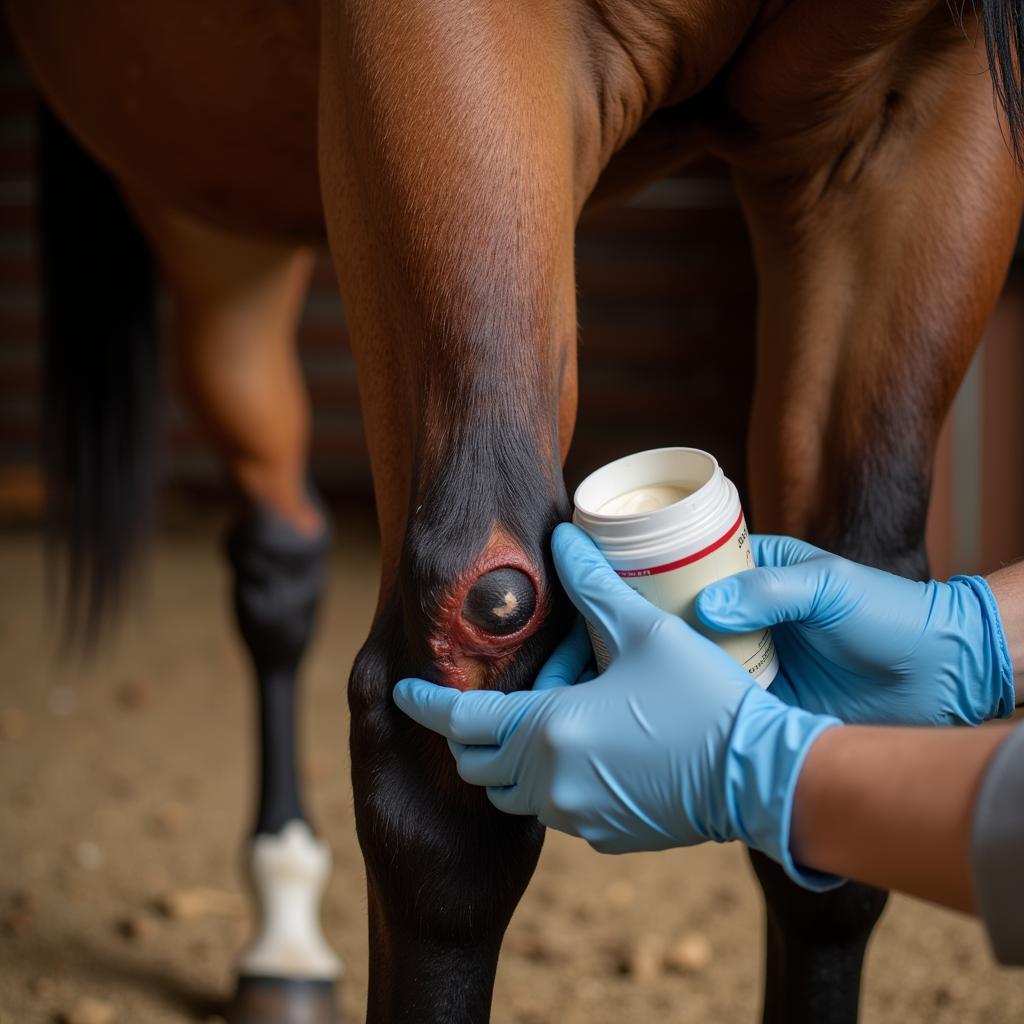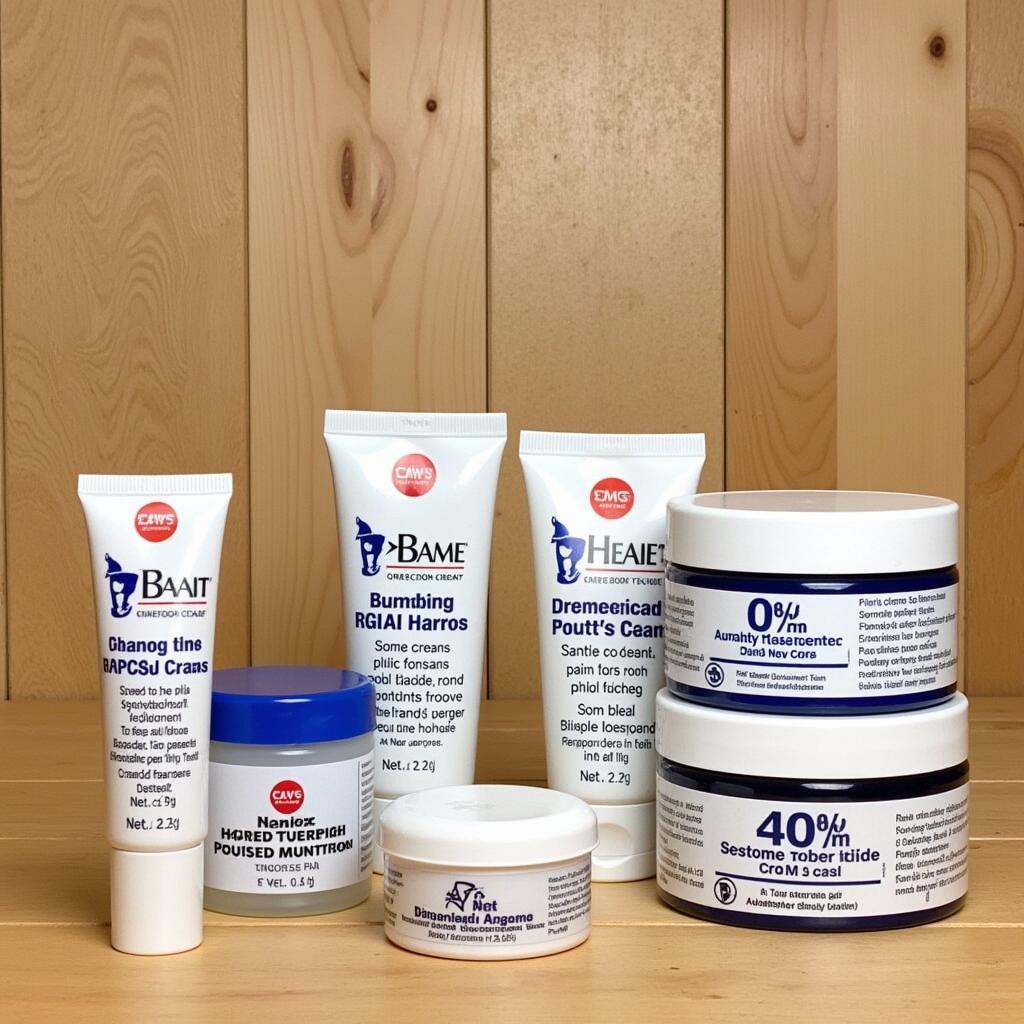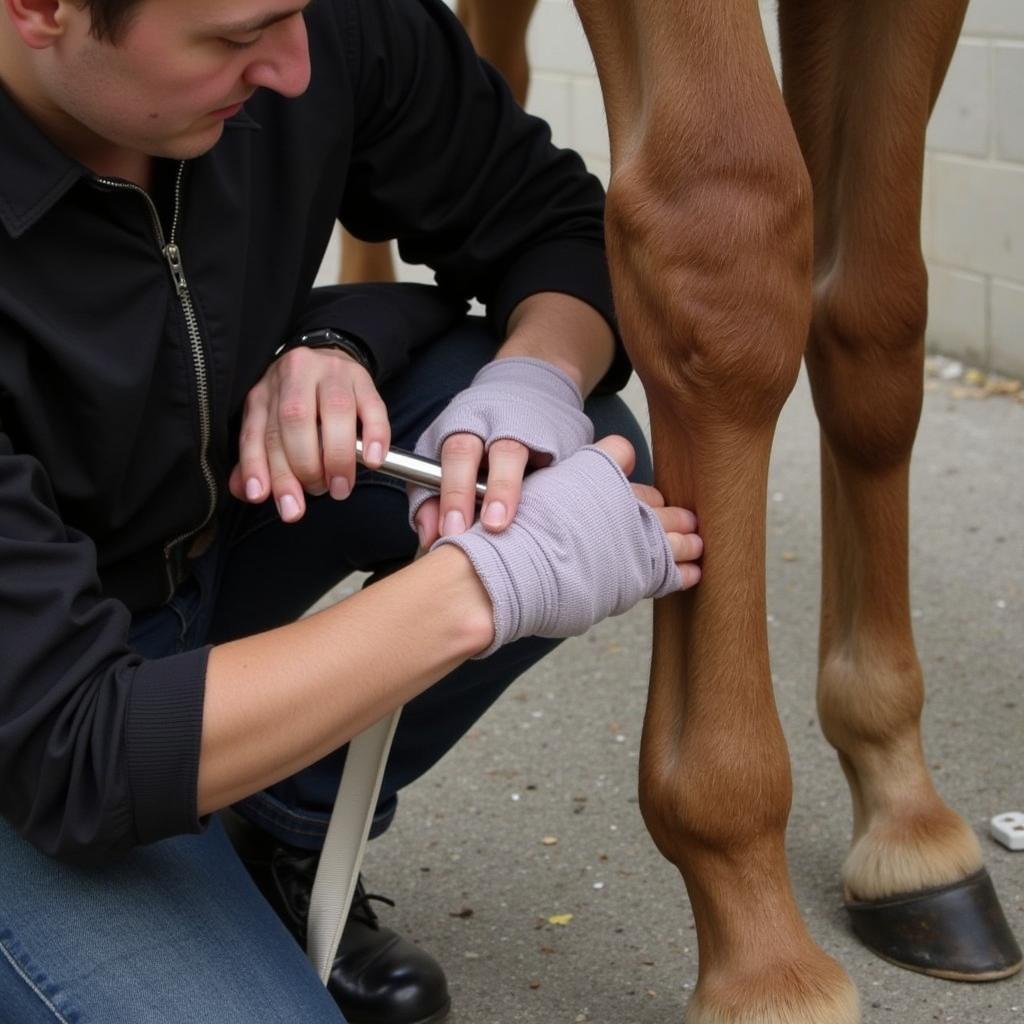Horse Ointment Cream is a staple in any equestrian’s first aid kit. Whether you’re a seasoned horse owner or just starting out, understanding the different types of ointments and their applications is crucial for maintaining your horse’s health and well-being.
 Applying Horse Ointment Cream
Applying Horse Ointment Cream
Understanding the Need for Horse Ointment Cream
Horses, by their very nature, are prone to minor scrapes, cuts, and skin irritations. From navigating uneven terrain to playful interactions with pasture mates, these magnificent creatures can benefit from a soothing and protective barrier that ointment creams provide.
Types of Horse Ointment Creams and Their Uses
The market offers a diverse range of horse ointment creams, each formulated to address specific needs. Choosing the right one depends on the nature of the skin condition:
1. Antiseptic Ointment Creams:
These creams are your first line of defense against infection. They contain ingredients like povidone-iodine or chlorhexidine that kill bacteria and prevent wound contamination. Ideal for:
- Minor cuts and abrasions
- Scratches and abrasions
- Post-surgical incisions
2. Antifungal Ointment Creams:
Fungal infections, like rain rot and ringworm, are common in horses, especially in humid climates. Antifungal creams containing clotrimazole or miconazole effectively treat these conditions. Look for these creams to address:
- Rain rot
- Ringworm
- Other fungal skin infections
 Different Types of Horse Ointment Creams
Different Types of Horse Ointment Creams
3. Healing and Soothing Ointment Creams:
Beyond preventing infection, certain creams promote healing and soothe irritated skin. These often contain ingredients like aloe vera, calendula, or zinc oxide. These are beneficial for:
- Dry, cracked heels
- Minor burns and sunburns
- Insect bites and stings
4. Barrier Protection Ointment Creams:
Protecting vulnerable areas from excessive moisture and irritants is crucial. Barrier protection creams, often containing petroleum jelly or beeswax, form a water-resistant layer. Consider these for:
- Preventing mud fever
- Protecting wounds during turnout
- Shielding sensitive skin from harsh weather conditions
Choosing the Right Horse Ointment Cream
Selecting the appropriate ointment involves considering your horse’s specific needs.
“Always consult your veterinarian to determine the best course of treatment for your horse,” advises Dr. Emily Carter, DVM, an equine veterinarian with over 15 years of experience. “They can assess the severity of the condition and recommend the most effective ointment.”
Here are some factors to keep in mind:
- Severity of the condition: A minor scrape may only require a simple antiseptic cream, while a deeper wound might need a prescription-strength ointment.
- Location of the affected area: Certain areas, like the legs, may benefit from a more water-resistant cream.
- Horse’s sensitivity: Some horses may be allergic to certain ingredients. Perform a patch test before applying any new product liberally.
Applying Horse Ointment Cream: A Step-by-Step Guide
- Cleanse the area: Before applying any cream, thoroughly clean the affected area with mild soap and water.
- Dry the area: Pat the area dry with a clean towel. Avoid using any material that could leave fibers behind.
- Apply the cream: Using clean gloves, apply a thin layer of ointment to the affected area.
- Follow the directions: Always refer to the manufacturer’s instructions for the specific dosage and frequency of application.
- Monitor for improvement: Check the area regularly for signs of improvement or infection. Contact your veterinarian if the condition worsens or does not improve.
 Horse Leg Bandaged after Applying Ointment Cream
Horse Leg Bandaged after Applying Ointment Cream
Beyond Ointment: Holistic Horse Care
While ointment creams play a vital role in equine first aid, they are just one aspect of holistic horse care. Remember to:
- Provide a clean and safe environment for your horse.
- Schedule regular veterinary check-ups and vaccinations.
- Offer a balanced diet and plenty of fresh water.
- Monitor your horse for any signs of illness or injury.
Conclusion
Horse ointment cream is an indispensable tool for every horse owner. By understanding the different types of creams, their applications, and proper application techniques, you can contribute to your equine companion’s overall health and happiness. For specific concerns, always consult with your veterinarian to ensure the best possible care for your beloved horse.
Looking for the right products for your horse? Explore our curated selection of cream for horses and swat ointment for horses for comprehensive care.
FAQs
1. Can I use human ointment cream on my horse?
It’s best to avoid using human medications on horses unless specifically directed by your veterinarian. Horses metabolize medications differently, and what’s safe for humans may not be safe for them.
2. How often should I apply horse ointment cream?
The frequency of application depends on the specific product and your horse’s condition. Always follow the manufacturer’s instructions or your veterinarian’s recommendations.
3. What should I do if my horse licks the ointment cream?
Some horses may try to lick off the ointment. If possible, distract your horse or use a taste deterrent to prevent them from ingesting the cream.
4. Can I use horse ointment cream on open wounds?
While some ointments are suitable for open wounds, it’s essential to consult your veterinarian first. Deep or infected wounds may require different treatment approaches.
5. How should I store horse ointment cream?
Store ointment creams in a cool, dry place, away from direct sunlight and out of reach of children and animals.
Have other questions about horse care? Check out our informative article on spray for horse wounds for more insights.
Need further assistance? Contact our dedicated team at Phone Number: 0772127271, Email: [email protected] or visit us at QGM2+WX2, Vị Trung, Vị Thuỷ, Hậu Giang, Việt Nam. We offer 24/7 customer support for all your horse care needs.